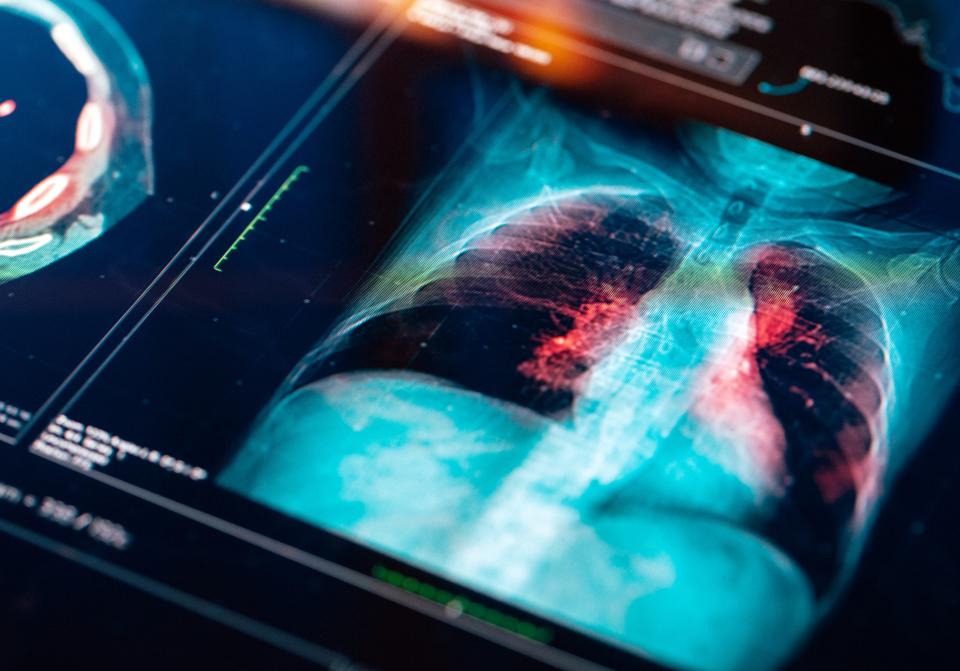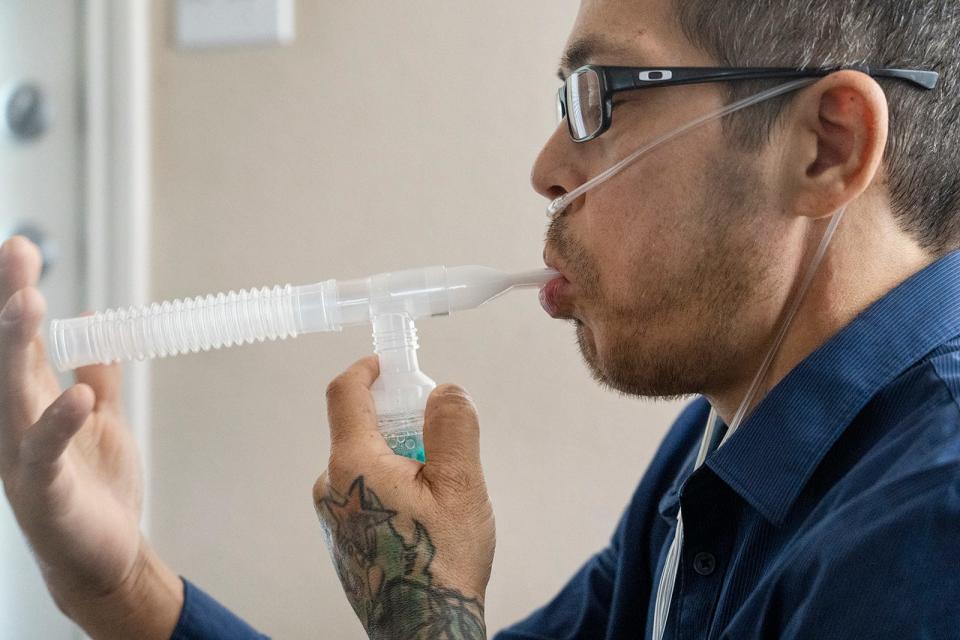Lung cancer survival is up. But screening is low for deadliest form of cancer in US
Lung cancer remains the deadliest form of cancer in the U.S., but the chances of surviving it continue to increase, a new American Lung Association report said.
The health nonprofit’s annual “State of Lung Cancer” report published on Tuesday showed the average survival rate of five years following a cancer diagnosis increased from 22% in 2015 to 26.6% in 2019. While survival gaps closed between people of color and non-Hispanic white people, communities of color still face worse outcomes than others and people of color are less likely to get diagnosed early enough to have a chance of survival.
“We have effective strategies to help lung cancer patients, but disparities exist,” Zach Jump, the lead author on the Lung Association report and an expert on epidemiology and statistics, told USA TODAY. “There’s a lot more work to be done.”
Close to 130,000 people are expected to die of lung cancer in 2023, according to the National Cancer Institute. Around 238,000 people will be diagnosed this year, the Lung Association said, but cases have decreased nationally by 8% in the past five years.
Not your grandfather's black lung: Federal rule seeks to save coal miners from silica dust

Symptoms often show up late, leading to high rates of patients dying. Lung cancer is commonly associated with smoking, which has declined in the U.S., though environmental factors, including air pollution and exposure to radon – a natural radioactive gas that can leak from the soil into homes – also contribute to the disease.
Black, Latino and Indigenous people had lower survival rates than white people, 25% of whom survived five years after being diagnosed, and Asians and Pacific Islanders had a 29% survival rate. People of color were less likely to have surgery or receive other treatment.
The report showed gaps across states with treatment and survival rates. Patients in Kentucky had the lowest overall survival rate, whereas people in Utah had the highest. Rhode Island had the highest survival rate after five years, at 33.3%; Oklahoma had the lowest at 21%.
Scans for lung cancer can be quick and easy
Doctors can use an annual low-dose CT scan to screen patients at risk of lung cancer, including current or former smokers, people exposed to secondhand smoke, and others exposed to radon, pollution, or carcinogens in the workplace, like asbestos. The quick process, which doesn’t involve injections or removal of clothing, requires a patient to hold their breath while a technician captures an image of their lungs to search for masses. A timely screening can reduce a person’s chance of dying by 20%.
The screening rate, however, remains low, even as a federal task force in 2021 expanded screening recommendations to include more people based on their age and smoking history. Just under 5% of people considered high risk were screened in 2022, the report said.
“There’s still a long way to go in screening and helping bring down deaths from lung cancer,” said Dr. Claudia Henschke, a professor of radiology and the director of the Early Lung and Cardiac Action program at the Icahn School of Medicine at Mount Sinai, in New York.
More: Vaccine exemption rates among kindergarteners has increased in 41 states, CDC report says
A recent study by Henschke found the 20-year survival rate was 80% for nearly 1,300 patients screened for early stages of lung cancer in the International Early Lung Cancer Action Program, where she serves as principal investigator. Survival after detecting the earliest form of lung cancer was 95%.
As screening increases, Henschke said, the number of early-stage lung cancer cases should also increase, making treating patients easier before it’s too severe.

Lifesaving treatments include immunotherapy
In the early stages, patients can undergo surgery to remove cancerous cells before they spread. About 21% of U.S. patients underwent surgery, though surgeries declined in 2020, likely due to the COVID-19 pandemic that affected access to medical care, the report said.
The report indicates there has been progress in developing life-saving remedies such as immunotherapy, which uses the body’s immune system to attack cancer cells, said Dr. Pasi Jänne, a Harvard Medical School professor and the director of the Dana-Farber Cancer Institute's Lowe Center for Thoracic Oncology in Boston. There are more opportunities to profile patients for therapies and expand screening.
“If you have patients who are screened, you can find lung cancer at an earlier stage,” he said. “And we know that earlier-stage lung cancers are more likely to be cured with intervention. That’s a missed opportunity for the entire country.”
The report called for greater access to screening through congressional legislation with bipartisan support. The bill would require public and private insurers to cover annual screenings for those eligible.
Eduardo Cuevas covers health and breaking news for USA TODAY. He can be reached at EMCuevas1@usatoday.com.
This article originally appeared on USA TODAY: Lung cancer is deadliest in U.S. But screening is low, report says

